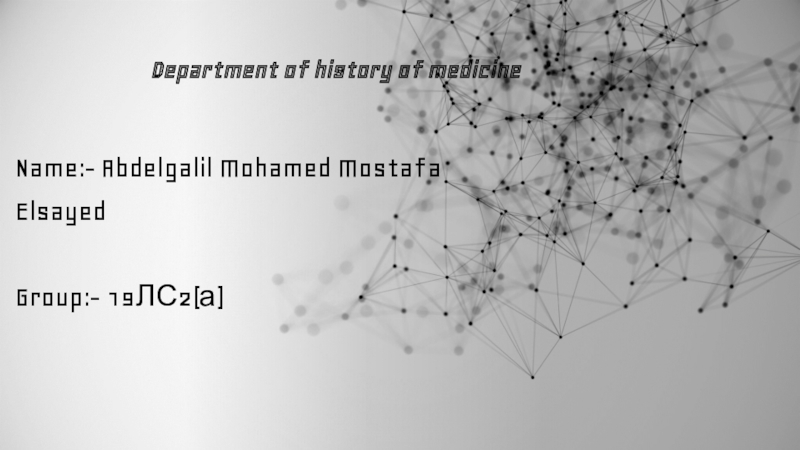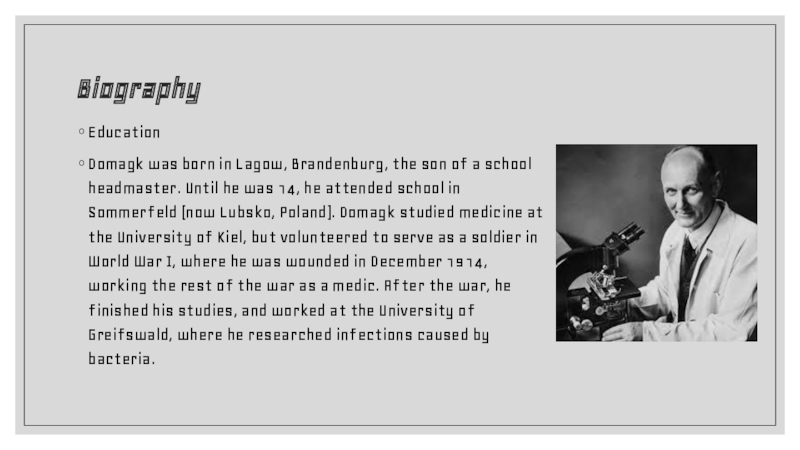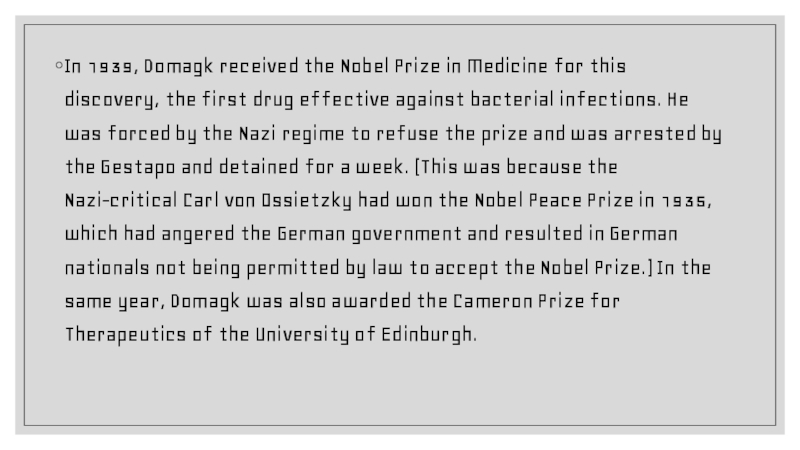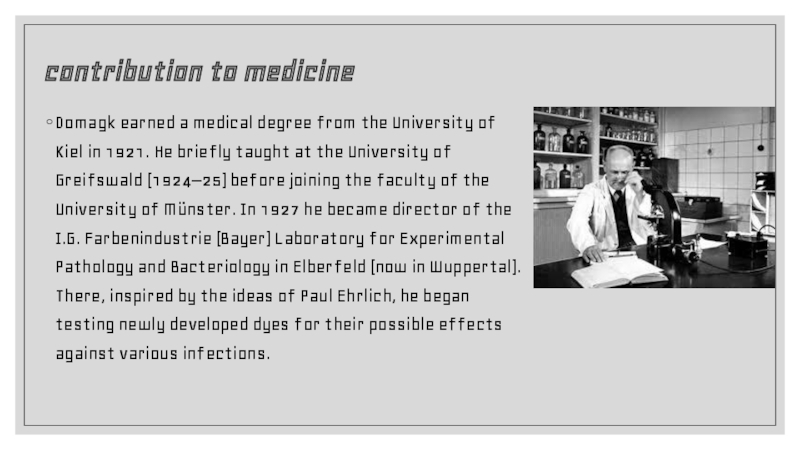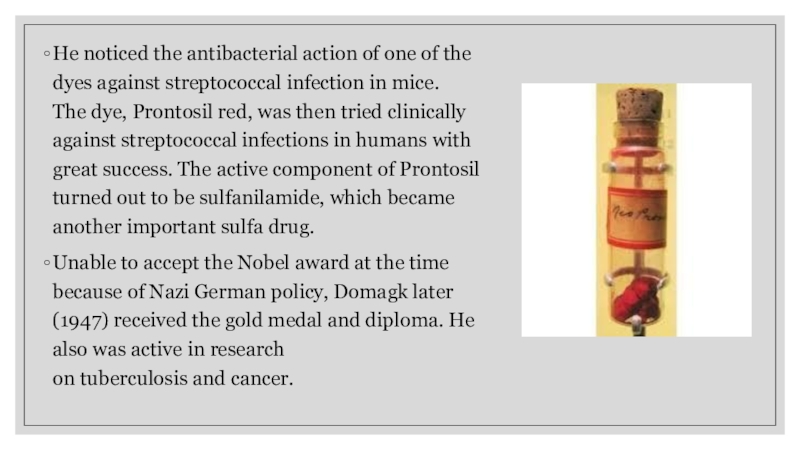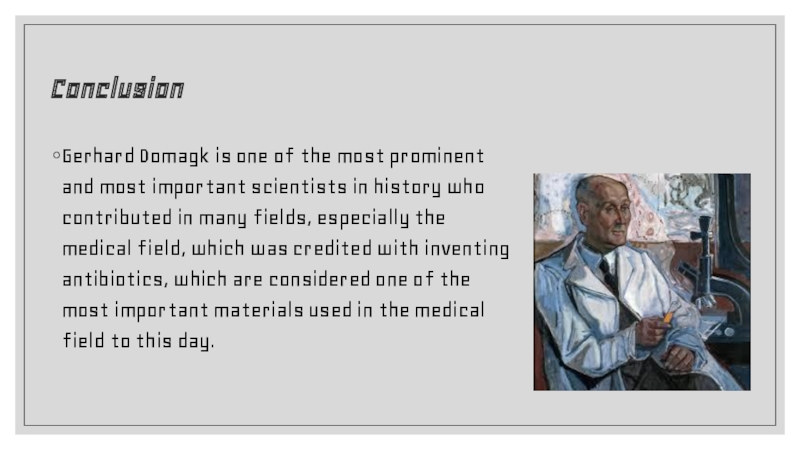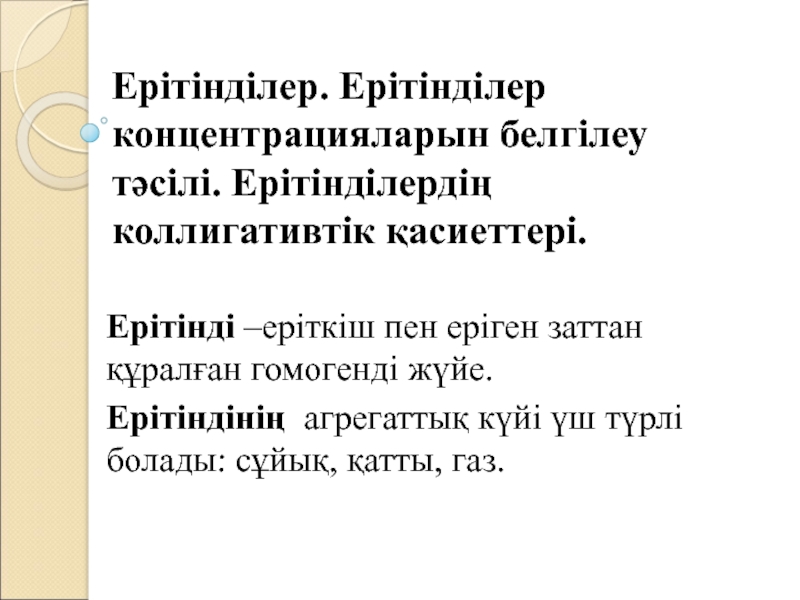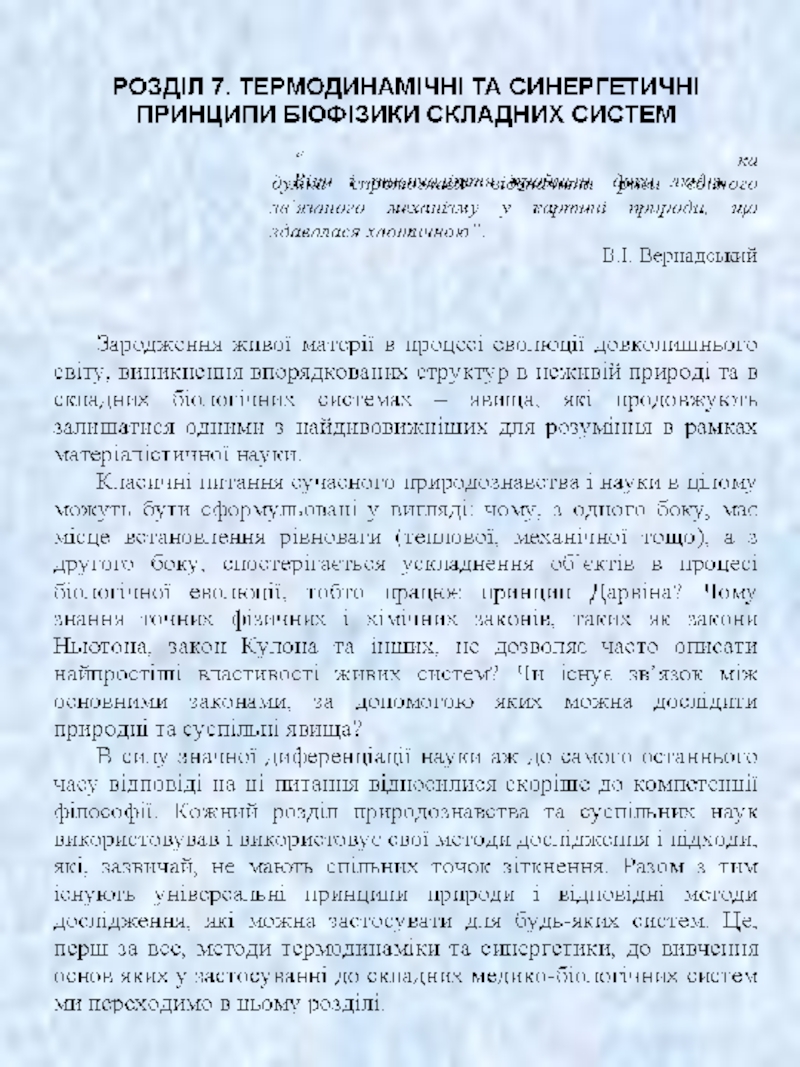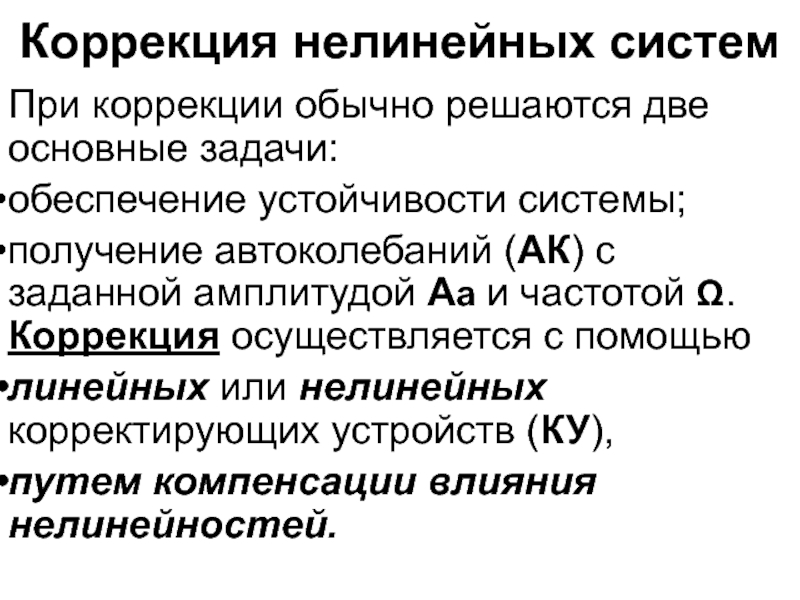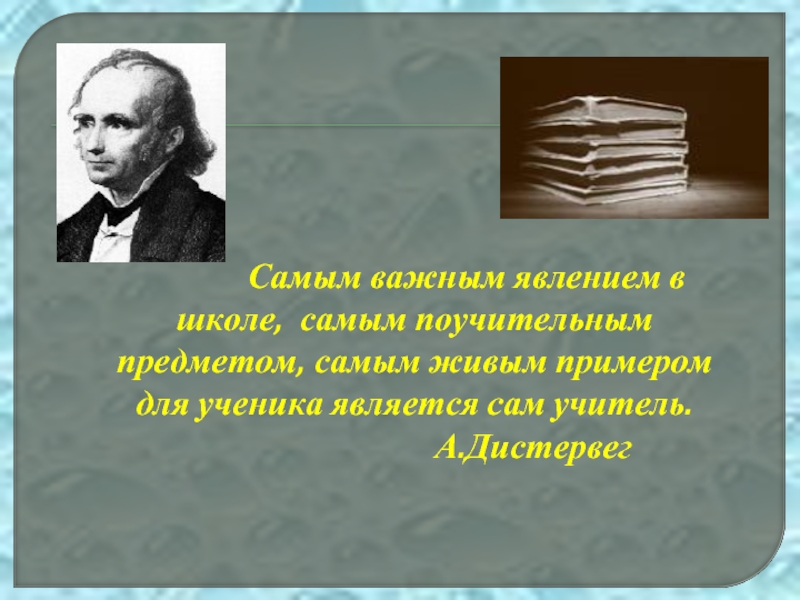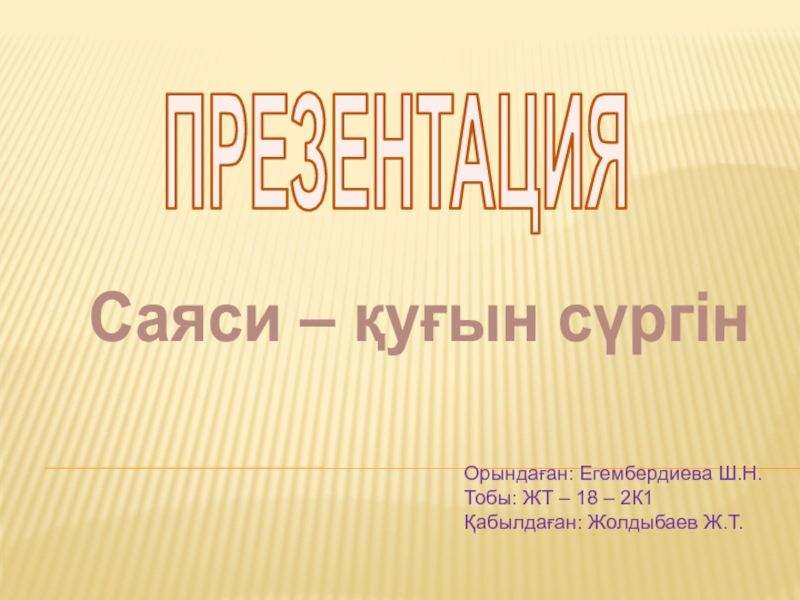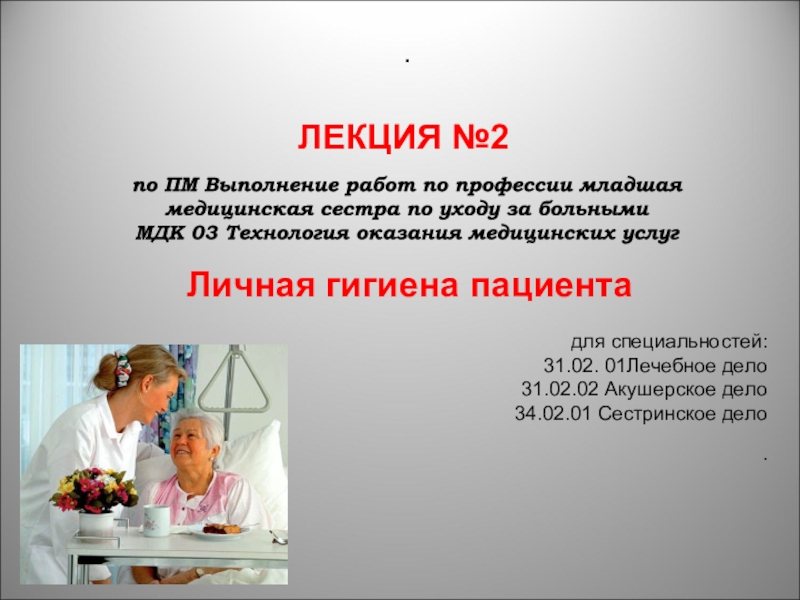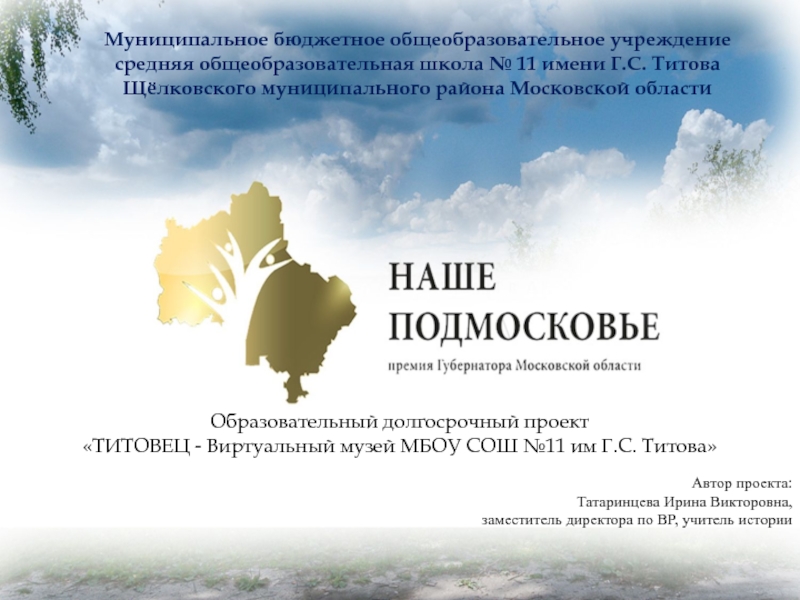Разделы презентаций
- Разное
- Английский язык
- Астрономия
- Алгебра
- Биология
- География
- Геометрия
- Детские презентации
- Информатика
- История
- Литература
- Математика
- Медицина
- Менеджмент
- Музыка
- МХК
- Немецкий язык
- ОБЖ
- Обществознание
- Окружающий мир
- Педагогика
- Русский язык
- Технология
- Физика
- Философия
- Химия
- Шаблоны, картинки для презентаций
- Экология
- Экономика
- Юриспруденция
Department of history of medicine
Содержание
- 1. Department of history of medicine
- 2. Gerhard DomagkGerhard Johannes Paul Domagk (30 October 1895
- 3. BiographyEducationDomagk was born in Lagow, Brandenburg, the
- 4. CareerIn 1925, he followed his professor Walter
- 5. In 1939, Domagk received the Nobel Prize in
- 6. contribution to medicineDomagk earned a medical degree
- 7. He noticed the antibacterial action of one
- 8. ConclusionGerhard Domagk is one of the most
- 9. Скачать презентанцию
Gerhard DomagkGerhard Johannes Paul Domagk (30 October 1895 – 24 April 1964) was a German pathologist and bacteriologist. He is credited with the discovery of Sulfonamidochrysoidine (KI-730), the first commercially available antibiotic and marketed under the brand name Prontosil,
Слайды и текст этой презентации
Слайд 2Gerhard Domagk
Gerhard Johannes Paul Domagk
(30 October 1895 – 24 April
1964) was a German pathologist and bacteriologist.
Sulfonamidochrysoidine (KI-730), the first commercially available antibiotic and marketed under the brand name Prontosil, for which he received the 1939 Nobel Prize in Physiology or MedicineСлайд 3Biography
Education
Domagk was born in Lagow, Brandenburg, the son of a
school headmaster. Until he was 14, he attended school in
Sommerfeld (now Lubsko, Poland). Domagk studied medicine at the University of Kiel, but volunteered to serve as a soldier in World War I, where he was wounded in December 1914, working the rest of the war as a medic. After the war, he finished his studies, and worked at the University of Greifswald, where he researched infections caused by bacteria.Слайд 4Career
In 1925, he followed his professor Walter Gross to the University
of Münster (WWU) and became a professor there himself. He also
started working at the Bayer laboratories at Wuppertal. The same year, he married Gertrud Strube (1897–1985). Later they would have three sons and a daughter.Domagk was appointed director of Bayer's Institute of Pathology and Bacteriology, where he continued the studies of Josef Klarer and Fritz Mietzsch, based on works by Paul Ehrlich, to use dyes, at that time a major product of IG Farben, as antibiotics. He found the sulfonamide Prontosil to be effective against streptococcus, and treated his own daughter with it, saving her the amputation of an arm.
Слайд 5In 1939, Domagk received the Nobel Prize in Medicine for this discovery,
the first drug effective against bacterial infections. He was forced by
the Nazi regime to refuse the prize and was arrested by the Gestapo and detained for a week. (This was because the Nazi-critical Carl von Ossietzky had won the Nobel Peace Prize in 1935, which had angered the German government and resulted in German nationals not being permitted by law to accept the Nobel Prize.) In the same year, Domagk was also awarded the Cameron Prize for Therapeutics of the University of Edinburgh.Слайд 6contribution to medicine
Domagk earned a medical degree from the University
of Kiel in 1921. He briefly taught at the University
of Greifswald (1924–25) before joining the faculty of the University of Münster. In 1927 he became director of the I.G. Farbenindustrie (Bayer) Laboratory for Experimental Pathology and Bacteriology in Elberfeld (now in Wuppertal). There, inspired by the ideas of Paul Ehrlich, he began testing newly developed dyes for their possible effects against various infections.Слайд 7He noticed the antibacterial action of one of the dyes
against streptococcal infection in mice. The dye, Prontosil red, was then tried clinically
against streptococcal infections in humans with great success. The active component of Prontosil turned out to be sulfanilamide, which became another important sulfa drug.Unable to accept the Nobel award at the time because of Nazi German policy, Domagk later (1947) received the gold medal and diploma. He also was active in research on tuberculosis and cancer.
